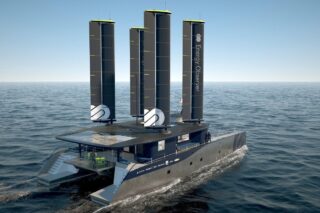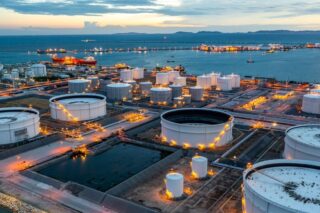Atlas Copco is widely recognized for its compressors, but in 2020, the company expanded into the process filtration systems industry. We spoke with Simon Finnigan, Product Manager at Atlas Copco responsible for this segment, to learn more about this move, their product offerings, and the challenges of penetrating a market dominated by established leaders.
Atlas Copco is widely recognized for its compressors, but less so for its process filtration systems. Could you share what led you to venture into this business area and what forms your offerings take?
Simon Finnigan: “We entered the market four years ago with a product solution portfolio, aiming to leverage our existing customer base—those who already purchase compressors from us. Our goal is to provide products that help keep their processes safe, ensuring that anything coming into contact with people meets the highest safety standards.
The main reason we’ve moved into process filtration is our long-standing expertise in filtration. We’ve been involved in standard compressed air filtration for over 20 years, giving us significant manufacturing experience in this area.
We expanded into process filtration because of the synergies with our existing customer base—customers who already purchase compressors, vacuum pumps, and air treatment products from us. Many of these customers also have liquid filtration needs within their production environments, making this a natural progression for us.
By leveraging our expertise in standard filtration and applying that knowledge to liquid filtration, we can offer a seamless crossover of skills and solutions, further strengthening our value to our customers.
Recently, we’ve strengthened this strategy with two acquisitions in the process filtration sector, further driving our commitment to supporting our customers’ safety and operational needs.”
How has the market responded to your entry?
Simon Finnigan: “We entered the market in mid-2020, right in the middle of the pandemic. Some might say it was the wrong time, but I actually believe it was the right time for us. It allowed us to analyze the market and understand the unique challenges in the process filtration industry at the time. Existing players were diverted to produce filtration for vaccines, which left industries like food and beverage, and some areas of pharma, facing significant challenges in securing the products they needed to continue production.
This situation created a window of opportunity for us to step in as a new entrant and quickly offer a solution. We were able to fill a gap in the market, and this worked out positively for us.”
How did you leverage your expertise in compressors to develop solutions in process filtration?
Simon Finnigan: “We’re approaching this in the same way we do with compressors—by focusing on the total cost of ownership for the customer. We analyze factors like energy usage and the number of liquid batches that can pass through filters before requiring replacement. Our goal is to reduce the total cost of ownership while also lowering energy consumption, applying the same principles we use with compressors.”
When you decided to venture into this business, did you already have a clear vision of the product offerings and innovations you wanted to introduce that would set you apart from competitors?
Simon Finnigan: “We wanted to approach things differently. The liquid filtration market has long been dominated by a few major players. However, we believe there’s an opportunity to challenge tthe market, particularly in today’s digital world and believing there is always a beter way.
We see significant potential for innovation, especially in systems, housings, cartridge design and media developments to enhance process monitoring and help customers optimize their operations.
Innovation has always been at our core. For example, with compressors, we were the first to introduce VSD (variable speed drive) technology paired with a magnet motor. That same spirit of innovation is guiding us in process filtration. The future is bright, and we’re excited about what we have planned for process filtration.”
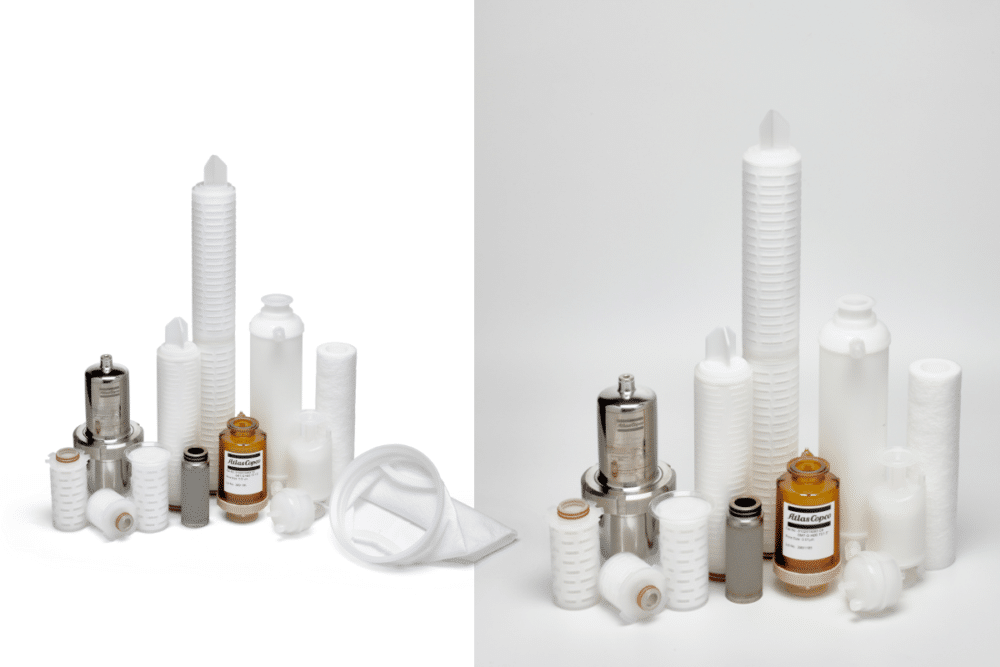
What challenges did you face while entering the process filtration market, and how did you overcome them?
Simon Finnigan: “We’ve always said that the Atlas Copco brand is both our greatest strength and, at times, our biggest challenge because we are immediately recognized for compressors and vacuum pumps and this strong association meant that when we entered the process filtration market four years ago, many didn’t immediately link us to filtration.
Our challenge has been building awareness and showing the market that we’re not just a compressor company—we’re a technology company at heart. That focus drives everything we do.
We’re continually exploring new products and technologies to serve our customers across their entire business. The goal is to shift perceptions so that when people think of filtration, Atlas Copco comes to mind first. We’re making progress, but there’s more work to be done.”
And do you see that it’s starting to be the case?
Simon Finnigan: “We’ve made great progress, but the work is never truly done. When I compare where we are now to where we were four years ago, the difference is remarkable. However, there’s still so much potential to go further, and that’s what drives me every day—the opportunity to improve, innovate, and push boundaries.
As we continue to grow and establish ourselves in process filtration, more customers are starting to recognize us. This growth not only fuels our momentum but also inspires us to innovate, develop new products, and enhance how we engage with our customers. The journey is ongoing, and the future looks incredibly promising.”
Could you tell us about your products? How many ranges do you offer, what sets them apart from competitors, and what key advantages do they have over existing products on the market?
Simon Finnigan: “We offer a wide range of products, including filter cartridges, capsules, and filter housings designed for the cartridges. Our cartridge range includes pleated fiber pre-filters made from polypropylene and glass fiber, as well as membranes in all major materials like PES, PVDF, PTFE, and nylon.
How do we differentiate? We provide sterile products, guaranteeing sterility when using options like PES membranes. In sterilizing-grade filtration, the testing process is standardized, the ultimate objective—bacterial removal—is consistent across products. Our goal is to make our products the best performance for our customers and look at ways of reducing their total costs associated with filtration – changeouts, sanitisation, sterilisation etc.
In pre-filtration and air/gas filtration, we focus on key metrics like minimal pressure drop and high dirt-holding capacity. For processed air and gas, we draw on our extensive experience in standard compressed air filtration to offer sterile air solutions with low-pressure drops and guaranteed filter lifetimes.
For liquid filtration, we prioritize optimizing the process to reduce ownership costs for the customer. This might involve designing cartridges that can handle more steam sterilization cycles, allowing customers to process more batches without replacing the cartridges as frequently, which lowers transition costs.
Education is also a key focus for us. We aim to train our sales team to help customers understand that, in some cases, replacing filtration more frequently can be more cost-effective than trying to extend the service life of a filter unnecessarily. For example, using a filter for four months instead of eight months can sometimes deliver better overall value.”
Which industries are these systems designed to serve? Pharma, food & beverage?
Simon Finnigan: “We are primarily focusing on the food and beverage, pharmaceutical, and semiconductor industries. These sectors represent the broadest base of customers we already serve, allowing us to extend our relationships from their plant rooms into their factory operations.
In liquid filtration, our main targets are food and beverage and pharmaceuticals as well as offering sterile air solutions in these industries because it’s an area where we excel.
In semiconductors, our initial focus is on ensuring the highest levels of cleanliness for compressed air, leveraging our extensive experience in this domain. Over time, we plan to expand our efforts to address liquid applications within the semiconductor industry as well.”
Are you targeting other industries?
Simon Finnigan: “It’s certainly part of our plans. We see four distinct categories: food and beverage, pharmaceuticals, semiconductors and microelectronics, and industrial.
In the industrial segment, we would target industries such as chemicals, paints and inks, and automotive, as these are large sectors with significant process filtration needs.
For example, the automotive filtration market is quite different from food and beverage. When we refer to automotive filtration, we’re specifically talking about filtration in car painting processes, not engine oil filtration—an entirely different market, which is actually shrinking due to the rise of electric vehicles.”
Your focus is on engineering sustainable filtration systems. Could you elaborate on what that entails, what it covers, and what your solutions offer?
Simon Finnigan: “Because we want to stand out, we want to have something that differentiates us from the rest of the market. Our focus had to be on the product development and what we can develop that hasn’t been done before, and how it can have a positive impact on both the market, but also the environment.
The filtration world is very heavily reliant on polymer based products. As we move forward with all of the issues in the environment and climate change, and how we can make a sustainable product? There is technology now being developed where certainly we can look at polymers that are coming from more sustainable sources. The problem you have with filtration is that it doesn’t lend itself to recycling because once it’s been used in either a liquid or an air and gas, certainly in a sterile application, it’s immediately classed as a hazardous waste or biohazardous waste, it has to be incinerated.
But if we can make the base products from a sustainable source in the first place, then we can really start to reduce that impact. And that’s something that we are looking at but the technology is still fairly young.”
Do you already have something ready?
Simon Finnigan: “The process filtration industry has long relied heavily on polymer-based products. With growing concerns about environmental issues and climate change, we’ve been exploring ways to develop more sustainable products. There are now technologies emerging that enable us to source polymers from more sustainable materials.
However, filtration poses a unique challenge: once the products are used in liquid, air, or gas filtration—especially in sterile applications—they are often classified as hazardous or biohazardous waste and must be incinerated. But if we can create base materials from sustainable sources in the first place, we can significantly reduce the environmental impact.
This is something we’re actively exploring, although the technology is still in its early stages.”
What proportion of your revenue comes directly from the process filtration segment?
Simon Finnigan: “While we can’t disclose our revenues, I can say that from 2020 to now,we have grown significantly year on year, which is phenomenal. We’re eager to continue growing even more aggressively.”
Will you be further developing this segment? Are there any new products or innovations on the horizon?
Simon Finnigan: “Our immediate focus is on developing products that provide real benefits to the customer while maintaining product safety, all while challenging the traditional practices that have dominated the industry for the past 30-40 years.
Our innovation is centered on maintaining the high standards of filtration while making the product more beneficial to the customer’s operations. By improving efficiency and reducing the total cost of running their processes, we aim to create a solution that still upholds safety standards. This is where our focus lies right now.”
Where are your clients located?
Simon Finnigan: “Currently, our focus has been on Europe and North America for filtration systems. We wanted to approach this by hiring knowledgeable experts from the industry to build strong relationships with our customers.
We’re now expanding into South America, Southeast Asia, and India, with plans to enter Africa, the Middle East, and China later this year.”
Do you expect significant growth by the end of 2025?
Simon Finnigan: “Yes, definitely.”
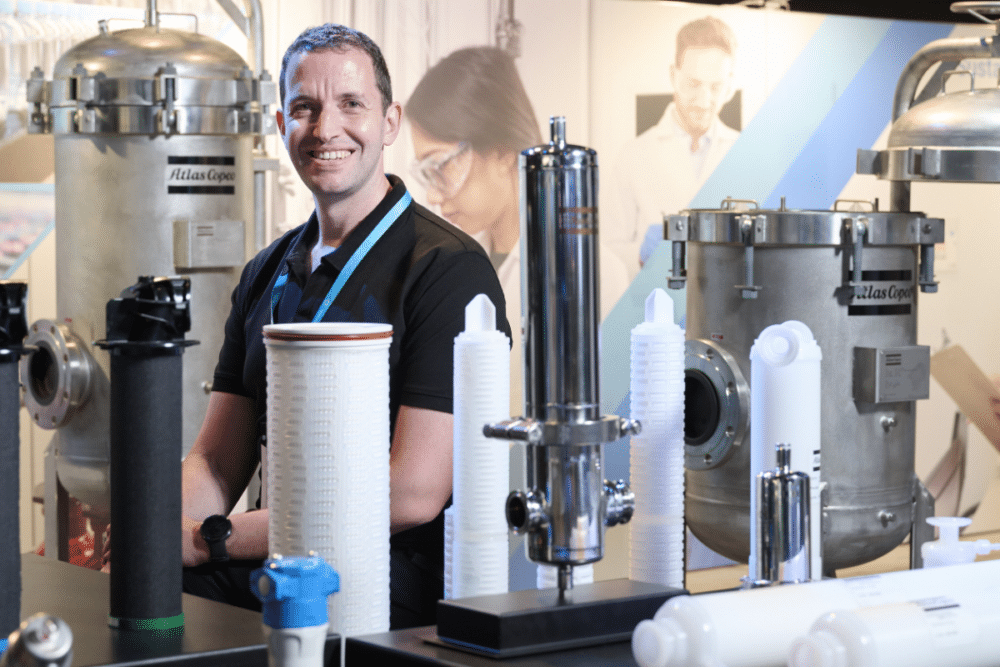
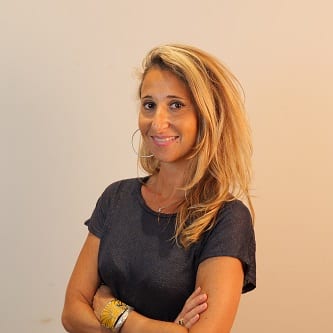

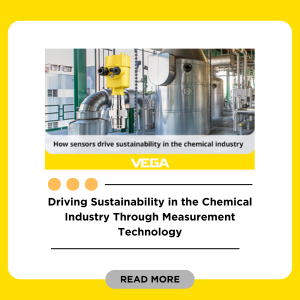

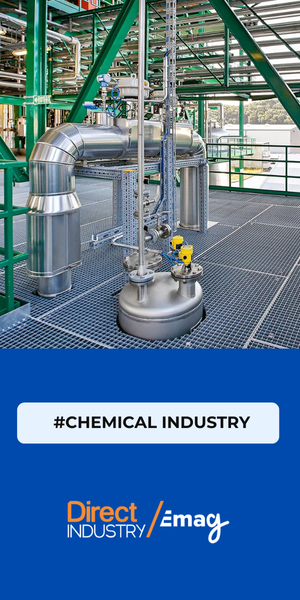
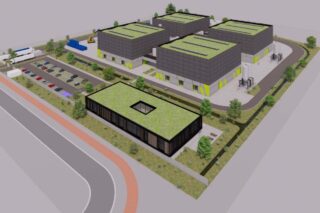
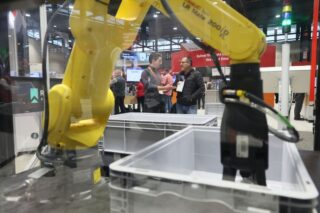
![Image [Buying Guide] How to Choose the Right AMR?](/wp-content/uploads/sites/3/AMR-320x213.jpg)

